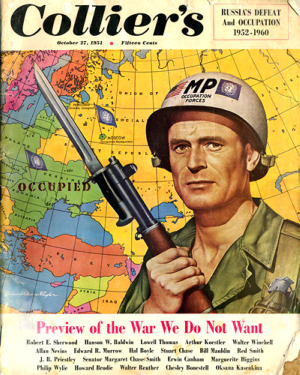As destructive as terrorism has been in the 21st century, it still doesn’t hold a candle to the madness of the Cold War where even the “good guys” devoted their time to developing horrific weapons like the US Air Force’s planned, but ultimately abandoned Supersonic Low Altitude Missile (emphasis added),
The SLAM was designed to complement the doctrine of mutually assured destruction, and as a possible replacement for or augment to the Strategic Air Command system. In the event of nuclear war it was intended to fly below the cover of enemy radar at supersonic speeds, and deliver thermonuclear warheads to roughly 16 targets.
The use of a nuclear engine in the airframe promised to give the missile staggering and unprecedented low-altitude range, estimated to be roughly 113,000 miles (182,000 km) (over four and a half times the equatorial circumference of the earth). The engine also acted as a secondary weapon for the missile: direct neutron radiation from the virtually unshielded reactor would sicken, injure, or kill living things beneath the flight path; the stream of fallout left in its wake would poison enemy territory; and its strategically selected crash site would receive intense radioactive contamination. In addition, the sonic waves given off by its passage would damage ground installations.
Another revolutionary aspect of the SLAM was its reliance on automation. It would have the mission of a long-range bomber, but would be completely unmanned: accepting radioed commands up to its failsafe point, whereafter it would rely on a terrain contour matching (TERCOM) radar system to navigate to preprogrammed targets.
Conceived of in the mid-1950s, it was ultimately abandoned before being completed with the rise of ICBMs, which were faster, and the obvious problems with testing a missile that would spew radiation contamination as part of its use.
